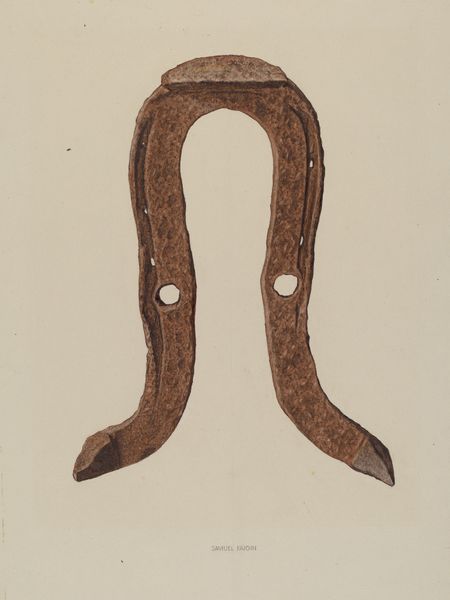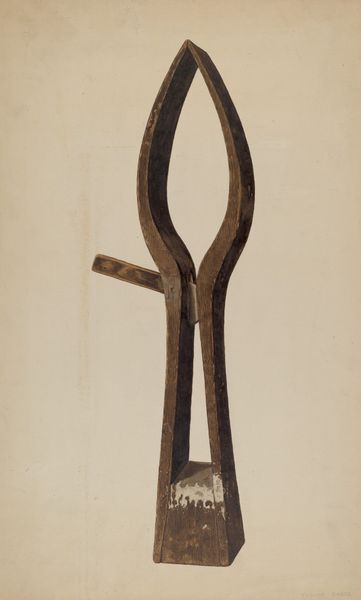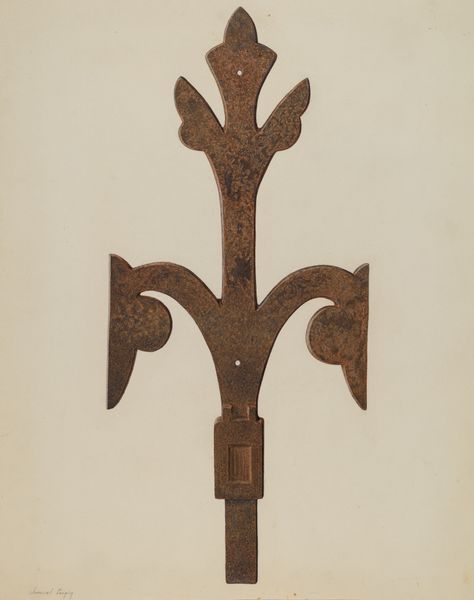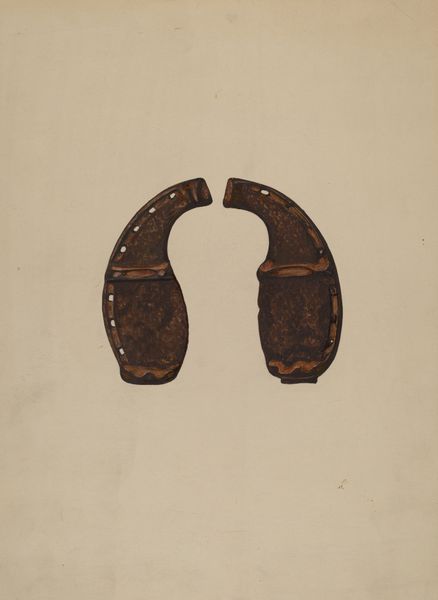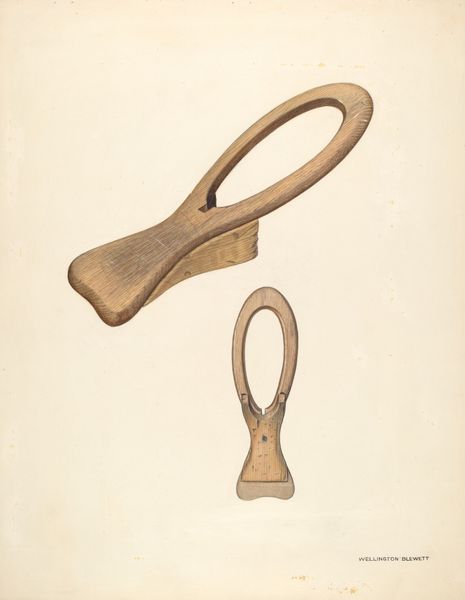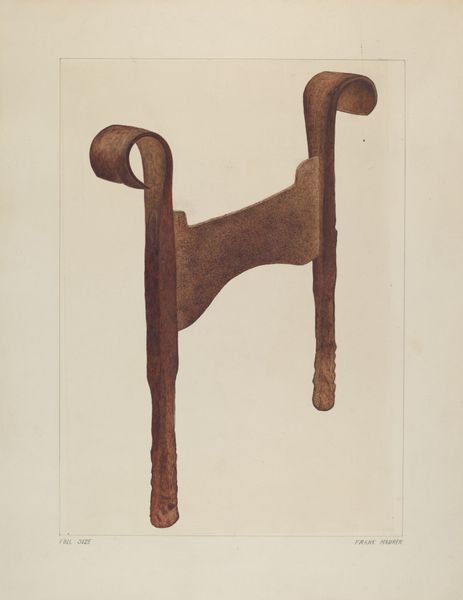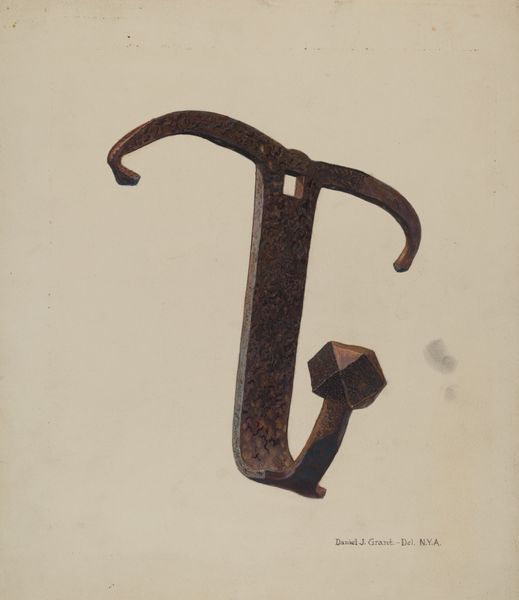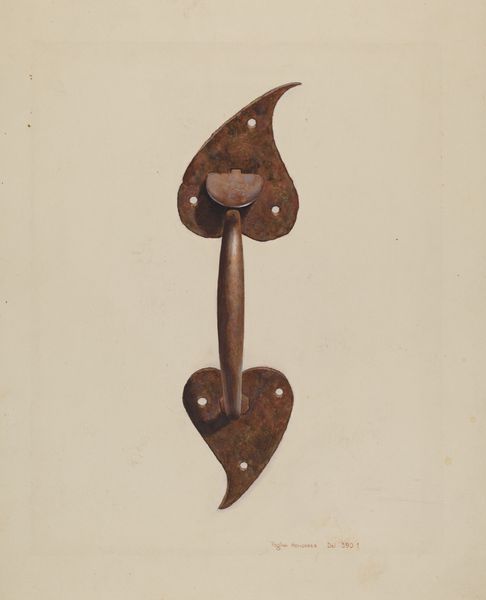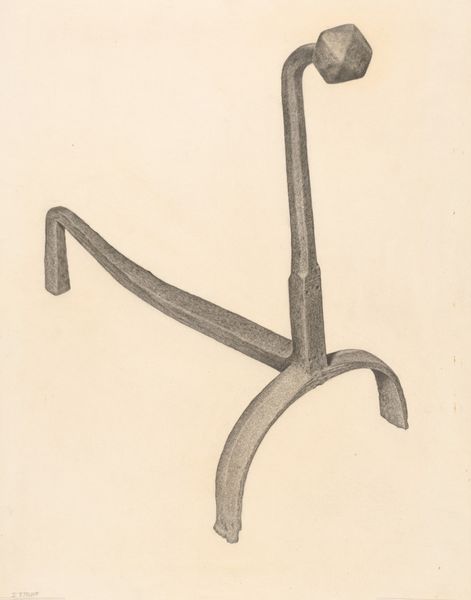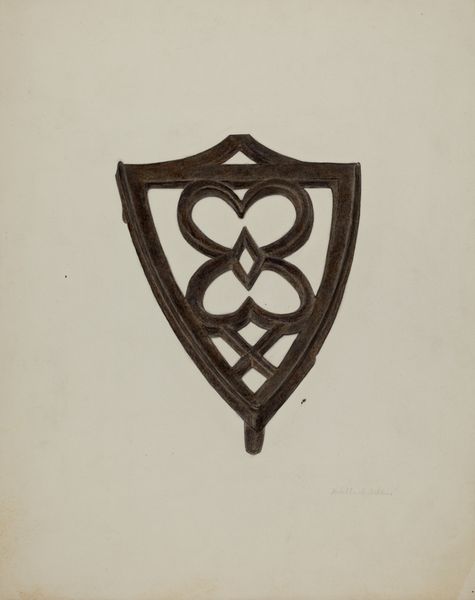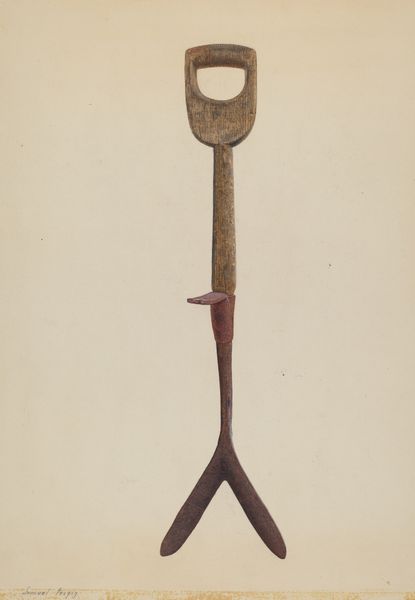
drawing, pencil
#
drawing
#
toned paper
#
geometric
#
pencil
Dimensions: overall: 37 x 28 cm (14 9/16 x 11 in.)
Copyright: National Gallery of Art: CC0 1.0
Curator: This is Earl Butlin's drawing, “Hinge,” dating from around 1938. It's executed in pencil on what appears to be toned paper. Editor: It possesses a stark and mechanical elegance, almost brutal in its simplicity. I feel like it could be a symbol for connection or… resistance? Curator: An interesting reading! I'm drawn to the repetition of the semi-circular shapes and how the screws, carefully delineated, suggest a kind of codified permanence. Think about it, the hinge has served as a visual shorthand for linkage and possibility for millennia. Editor: Indeed! As someone oriented towards social and historical contexts, the drawing presents, to me, a broader cultural narrative. The Great Depression of the late 1930's provides the setting: A tool. Simple and useful, born out of a society where resourcefulness and mending, where keeping doors and windows secured, are virtues of great practical consequence. Curator: So the symbolism carries even deeper? It almost resonates with images of stability that recur throughout history: architectural drawings of arches and other components that assure that structures can carry the weight and fulfill their function over decades. Editor: Precisely. It prompts reflections on industrial labor, economic strife, the functional design inherent to that moment, and its relation to gender. Think of the era, what types of labour hinges were for then! In those patriarchal roles of fixing a house or furniture, were there opportunities for working class individuals to gain respect in ways they were denied elsewhere? Curator: I had not perceived all that depth, and I appreciate the perspective, while I remained primarily focused on the basic geometric form itself. Perhaps, this 'hinge' swings open on an exploration that has only just begun! Editor: I am left pondering, does this mundane artifact, rendered so meticulously in pencil, symbolize both confinement and liberation during periods of acute crisis? Food for thought, isn't it?
Comments
No comments
Be the first to comment and join the conversation on the ultimate creative platform.
